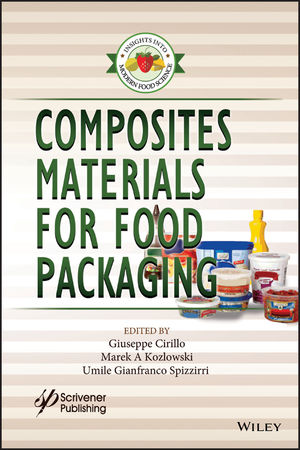Why Cold Chain Solutions Are a Hot Topic for Manufacturers

Photo by Josiah Farrow on Unsplash
When it comes to perishable products, the supply chain is only as strong as its weakest link. If there's a break in the chain, the quality of the product and company competitiveness can suffer. That's where cold chain comes in.
According to Allied Market Research, the cold chain logistics market is set to experience rapid growth over the next five years, swelling into a half-trillion-dollar industry by 2026. Cold chain packaging alone will command around $40 billion of that growth.
Cold chain packaging is used in many industries to maintain the desired temperature for their perishable products and help manufacturers adhere to relevant safety regulations and industry standards.
Foods that require cold chain include dairy products, eggs, meat, poultry, fish, fruits and vegetables, confection, and prepared meals. Chemical manufacturers require cold chain solutions for temperature-sensitive products and products that have a short shelf life. Pharmaceutical manufacturers require cold chain for vaccines, blood products and biologics.
Cold Chain Systems: Comparison of Active, Passive and Hybrid Thermal Systems
The term "cold chain" describes the uninterrupted system that preserves product quality by maintaining a temperature-controlled environment from production through transportation and distribution. This is accomplished through a combination of insulation, cooling elements and temperature-controlled environments. There are three main types of cold-chain packaging: active, passive and hybrid.
Active cold chain uses refrigeration and thermostatic regulation to keep temperature-sensitive products cool during storage and transportation. Although it can effectively hold temperatures for extended periods within a small margin of change, because it relies on infrastructure and equipment, it can be an expensive form of cold chain.
Passive cold chain is the simplest type of cold chain and relies on packaging solutions such as insulation, thermal blankets, gel packs and dry ice to keep products at the desired temperature.
Hybrid cold chain solutions incorporate active and passive elements to ensure product quality and effectiveness throughout storage and transportation.
Benefits of Cold-Chain Packaging Solutions
From food to chemicals to medicine, cold chain packaging is revolutionizing how we ship goods and build value-driven supply chains.
The temperature control provided by cold chain is key to helping manufacturers of perishable products deal with supply chain complexities.
It supports competitive margins and has become essential to helping companies achieve their sustainability goals. Additional benefits include:
Product Quality and Safety – Bacteria and other microorganisms thrive in warm temperatures and keeping perishable products cool can prevent spoilage. In addition, cold chain packaging helps businesses meet food safety regulations set by the USDA and FDA. These regulations mandate strict guidelines for storing and transporting perishable foods and using cold chain packaging helps businesses comply with these regulations while preventing spoilage and contamination.
Extended Shelf Life – By keeping products fresher longer, products not only have a better shelf life but also allow businesses to expand their geographic coverage to increase their market share.
Freshness – Temperature control helps maintain a product's appearance, texture, taste, and aroma. In addition, it allows products like fruits and vegetables picked before they are ripe to ripen appropriately as they are transported long distances to grocery stores.
Nutritional Value – Cold chain packaging can help preserve food's nutritional value. Nutrients are lost more quickly when food is allowed to warm up. Keeping food chilled or frozen helps it retain its nutritional content.
Achieve Sustainability Goals – Manufacturers have always sought to produce safe, high-quality products while minimizing waste. Cold chain packaging can help these businesses meet their sustainability goals by reducing waste, rework and replacement resulting from the consequences of unprotected perishable products. Less spoilage and waste lessen the amount of product in landfills, thereby contributing to a smaller carbon footprint.
Reduced Damage – The protective properties that lend themselves to insulation and temperature regulation often include protective properties that minimize damage. For example, fragile food items like eggs, berries and delicate pharmaceuticals can be stored and shipped without fear of breakage when packed in insulated containers with cooling elements.
Improved Customer Satisfaction – Customer satisfaction is vital in today's competitive market. By using cold chain packaging, you can be sure that your customers are receiving fresh, safe products that meet their expectations. Happy customers mean repeat business and referrals-both of which are essential for any business's success.
Common Types of Cold Chain Packaging Solutions
There are a variety of packaging options that exist under the "cold chain" banner.
Insulated box liners: With excellent thermal performance and ease of use, insulated box liners are one of the most in-demand cold chain solutions on the market. You can combine these insulated liners—in various shapes, sizes and configurations—with cold packs to achieve long-term temperature control across your supply chain. Insulated box liners minimize product loss and help you ship your goods in any season, to nearly any area, without worrying about pitch-perfect cold chain logistics.
Insulated mailers: Like insulated box liners, insulated mailers protect perishables against temperature disruptions along their route. Insulated mailers can be thermal-reflective and guard against temperature loss. These solutions are often used for meal delivery logistics, as they protect produce and meats against temperature fluctuations while they sit outside on a doorstep in the heat.
Insulated pouches: Another insulated solution, insulated pouches, are used to transport small, temperature-sensitive goods. Some insulated packages protect against shock and vibration, depending on your solution.
Gel packs: Often used with insulated liners, gel packs are cost-effective packaging with refrigerants that keep goods cold across the supply chain.
Thermal pallet covers: Thermal pallet covers slip over an entire pallet of goods and protect them against temperature fluctuations.
Foam insulators & molded packaging: Both foam insulators and molded packaging conform to the product to protect it during shipping while simultaneously providing temperature control.
Looking for a reprint of this article?
From high-res PDFs to custom plaques, order your copy today!






